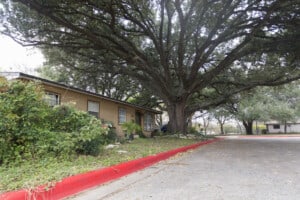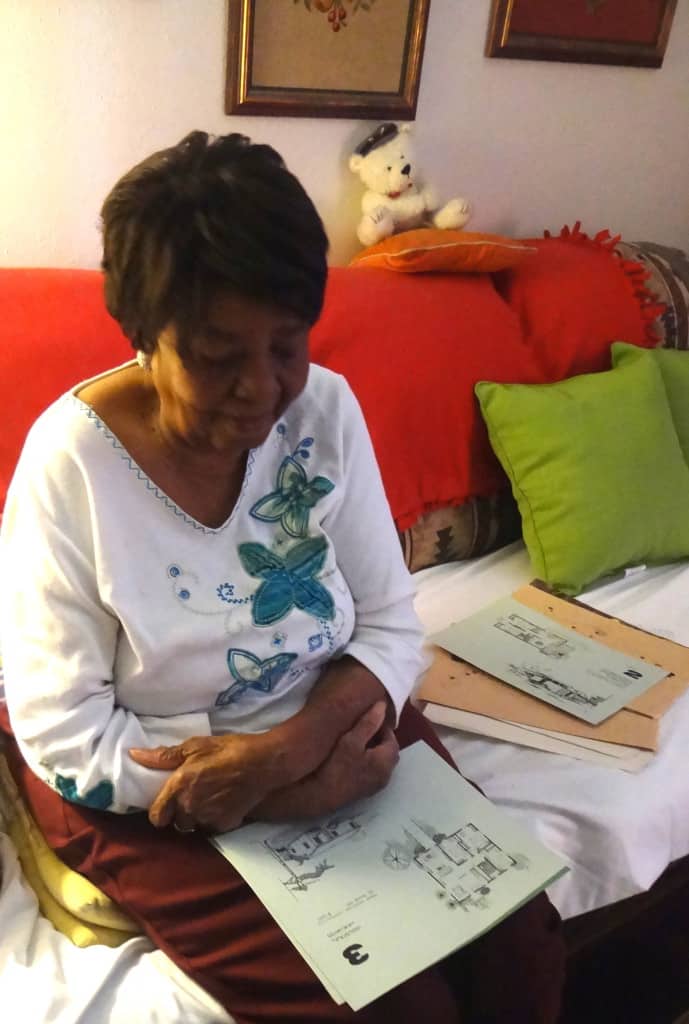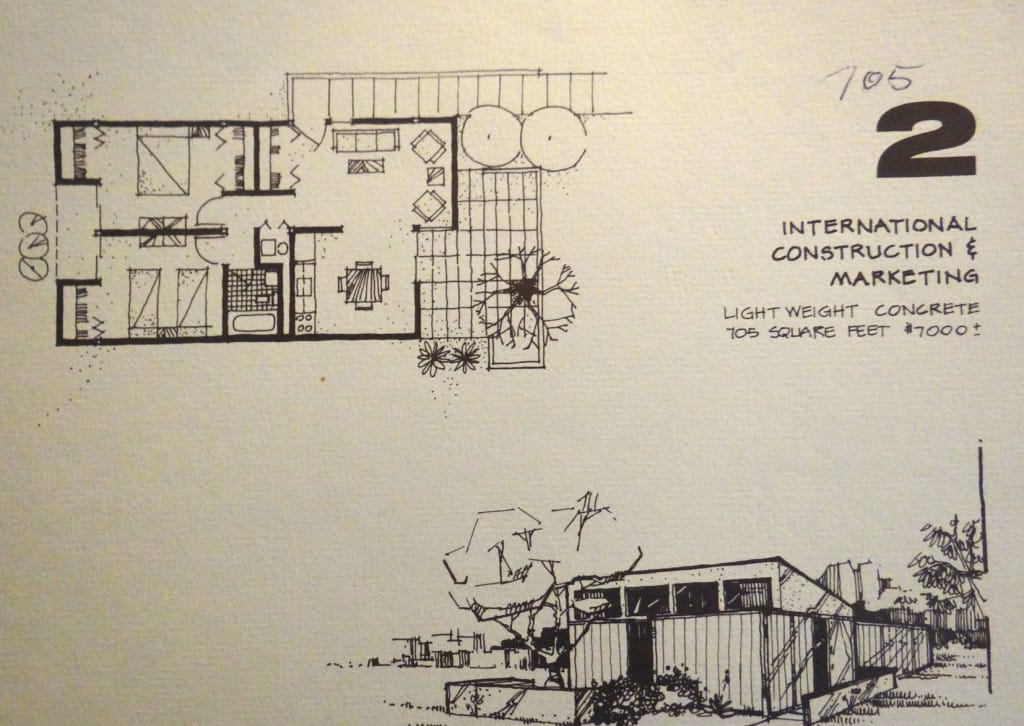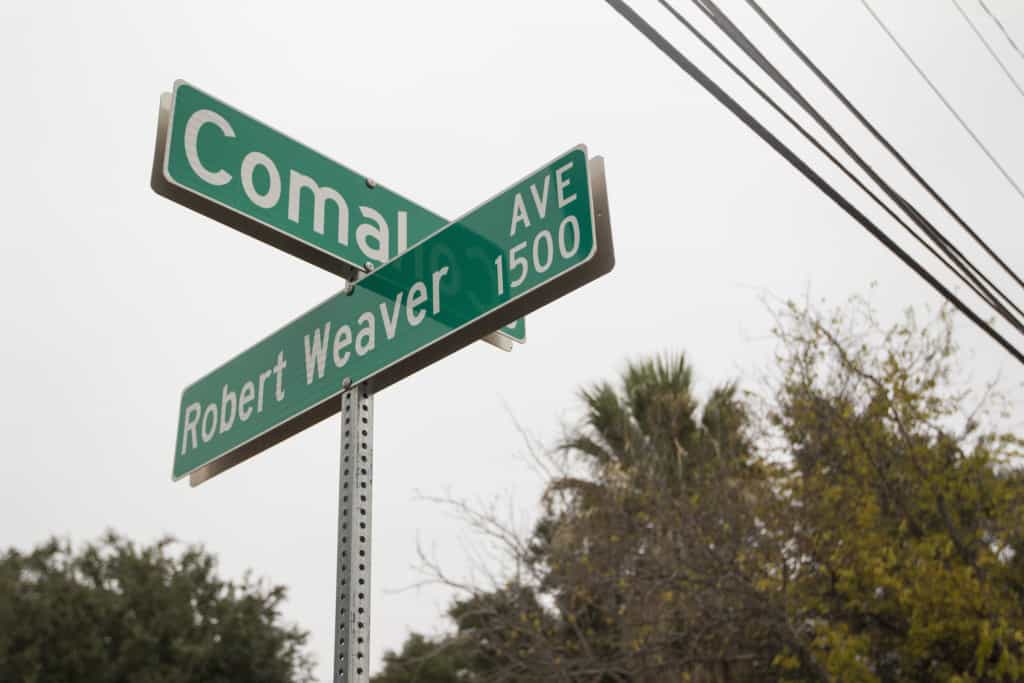Students document the history of Austin’s Robert Weaver Homes in hopes of preserving them and advocating for their long-term residents

Only a few blocks east of Austin’s Interstate 35 and Lady Bird Lake there is a hidden community of ten quirky homes nestled together under the oak trees on Robert Weaver Avenue. Known as the Robert Weaver Homes, they share a common history. They were constructed in 1969 as part of an experiment in energy-efficient and affordable housing under President Lyndon B. Johnson. At that time, The University of Texas at Austin participated in President Johnson’s experiment via its schools of Architecture and Social Work, which facilitated the design process of the houses and the selection of homeowners.
Today, almost 50 years later, UT students enrolled in the service-learning course “Global Project Development” are documenting the history of the Robert Weaver Homes in hopes of preserving them and advocating for their long-term residents, whose livelihoods are being challenged by rapid development and gentrification.
“Service learning merges academics with community service in order to provide students with hand-on experiences outside the classroom,” explained Dr. Dorie Gilbert, associate professor of social work and the course’s instructor. “This semester we are working with the residents of the Robert Weaver Homes, who in the midst of the city’s rapid growth are fighting to maintain the neighborhood’s historical significance as part of LBJ’s legacy in Austin.”
Students in Gilbert’s course apply a service-learning model called CRAFT: they enter the target community by cultivating trust (Contact), gather information about the site (Research), produce an innovative project (Action), spark reflection and dialogue to expand the impact of their project (Feedback) and pass on the skills to sustain the impact of their project (Teaching).

This semester, students are using the CRAFT model at the Robert Weaver Homes to accomplish two main projects. One group is conducting and recording oral interviews with the community residents, many of whom have lived there since 1969 and have thus witnessed decades of political, economic, and social change in East Austin.
The other group is conducting a survey with homeowners to assess the needs of the individual houses—everything from fresh paint to new doorframes and proper drainage channels. The results of this assessment will inform The Project, an initiative from UT Division of Diversity and Community Engagement known as the university’s largest day of service. Under this initiative, each February, UT students, faculty, and staff volunteer together and connect with an underserved neighborhood in Austin for a full day.
“Working with UT students has been wonderful,” said Lori Renteria, an East Austin long-term resident and steering committee member of Austin Tejano Trails, a group of volunteers seeking to preserving the history, diversity, and cultural assets in East Austin. “Our thinking is that if people know about the rich history of this neighborhood, they will less inclined to bulldoze it.”
Originally named Austin Oaks, the Robert Weaver subdivision was planned as a racially inclusive community for low-income, working-class families inhabiting affordable and energy-efficient homes. Ten builders from across the United States were invited to submit designs and build the homes. As part of the project, a Design Center was created in downtown Austin, where UT researchers interviewed and screened over 300 African American and Mexican American families as possible homeowners. According to the Tejano Walking Trail Guide (PDF), the families were paid a small stipend to participate in the process, part of which involved family members moving cardboard replicas of furniture and appliances around a game room to show how they would like their home to be designed. The thinking at the time was that different ethnic groups had completely different lifestyles that would require different floor plans.

In the end, five African American families and five Mexican American families were selected by lottery. They formally occupied their new homes in 1970. The ribbon cutting ceremony was President Johnson’s last official act as president. (More history of the neighborhood in this Prezi created by UT students)
“The experience in the Robert Weaver neighborhood has allowed me to understand the needs of the community and the impacts of gentrification in a very tangible way,” said Jared Dawson, a senior majoring in accounting and one of the students in Dr. Gilbert’s class.
Social work major Erik Behr added that he was able to understand the do’s and don’ts of needs assessments, which he is looking forward to conduct as a community social worker after he graduates. Elandra Jackson, a senior majoring in human development and family sciences, stated that she learned how to evaluate what worked and what didn’t when interacting with community members.
“I have learned a lot about the history and current plight of this community,” said social work major John Palmieri. “I wish that there were more that we could do. We truly hope that we can serve the current homeowners well, and hopefully contribute to keep the legacy of this neighborhood.”
Posted December 5, 2014. By M. Andrea Campetella with the collaboration of UT students Marylu Vazquez, Elandra Jackson, Jared Dawson, John Palmieri, and Erick Behr. Photographs by Miguel Gutierrez Jr., Ashley Abena Millhouse and Vanessa Global.


